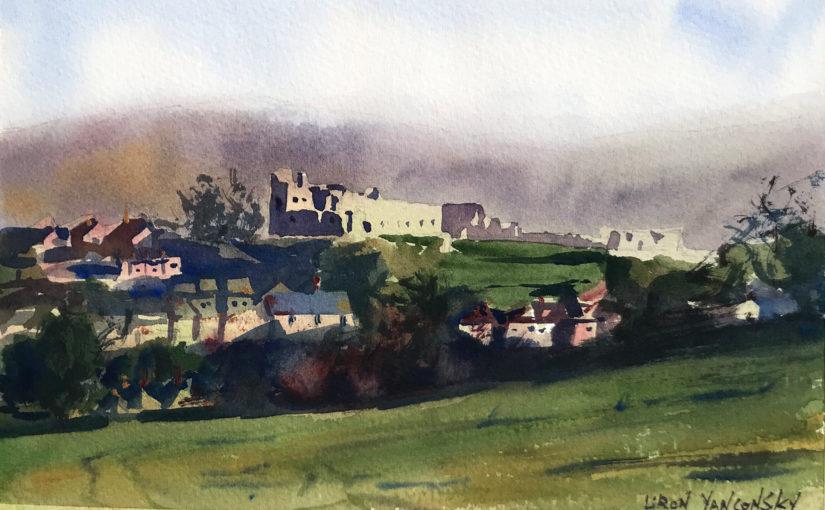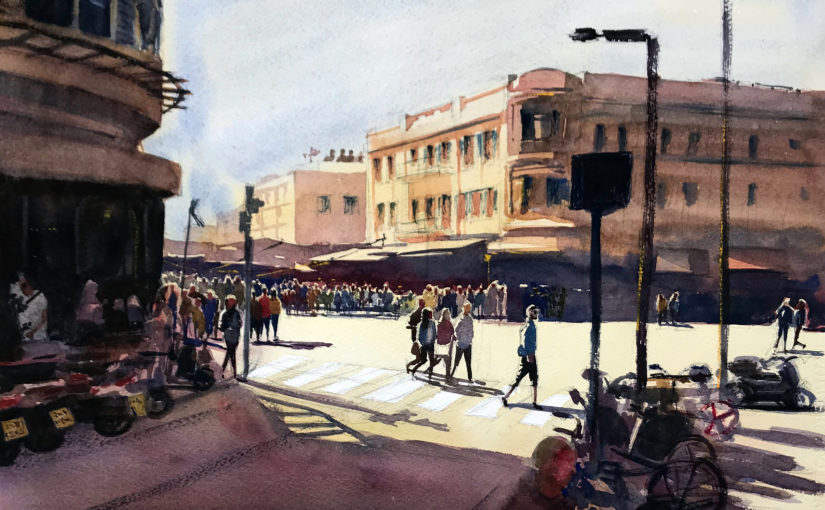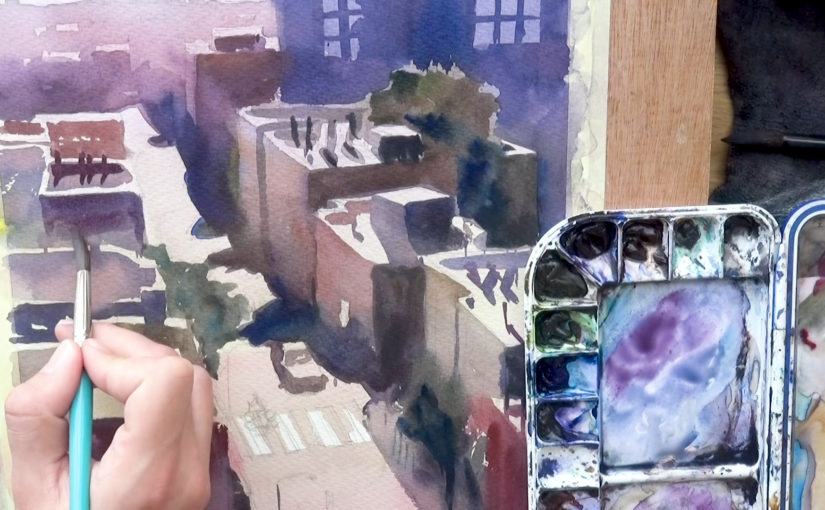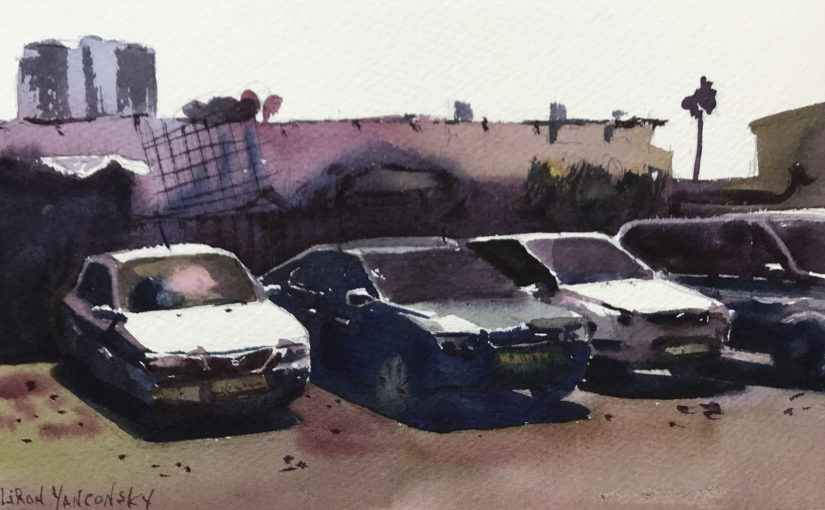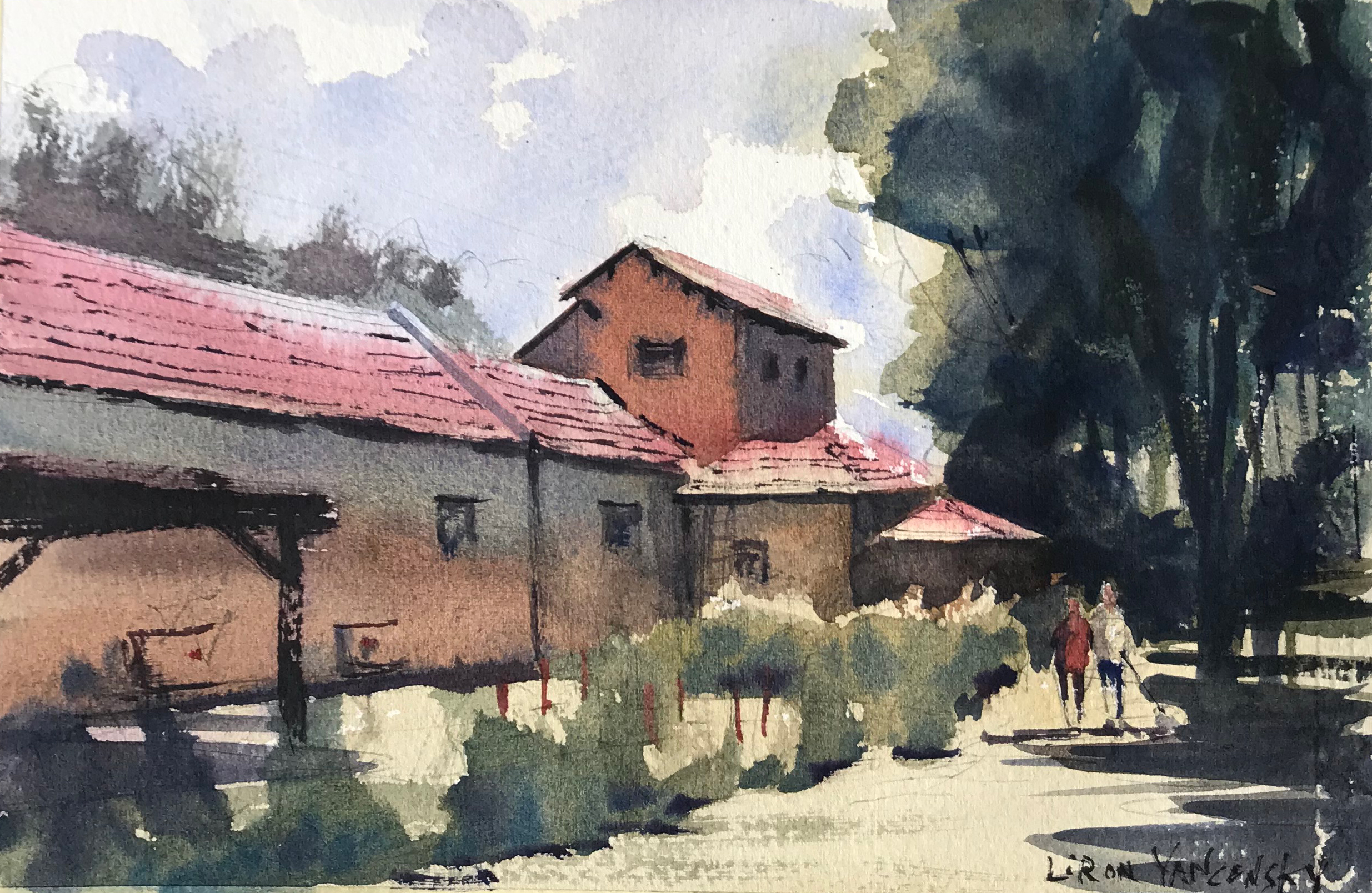Podcast: Play in new window | Download
Subscribe: Android |
Today I’m going to show how to IMMEDIATELY improve your artistic results, without improving your actual skills.
This is aimed at visual artists mainly, and is probably relevant to any type of medium (watercolor, oils, acrylics, pastels, pen and ink – you name it!)
Spontaneity VS Planning
In the past I talked a lot about spontaneity, fun, looseness and allowing your instincts guide you.
To balance this out, today we’ll consider a more deliberate, planned approach.
No one method is the holy grail of anything. Doing BOTH is where the magic happens.
Highly-Detailed Painting
The thing that made me think more about this process, is this painting…
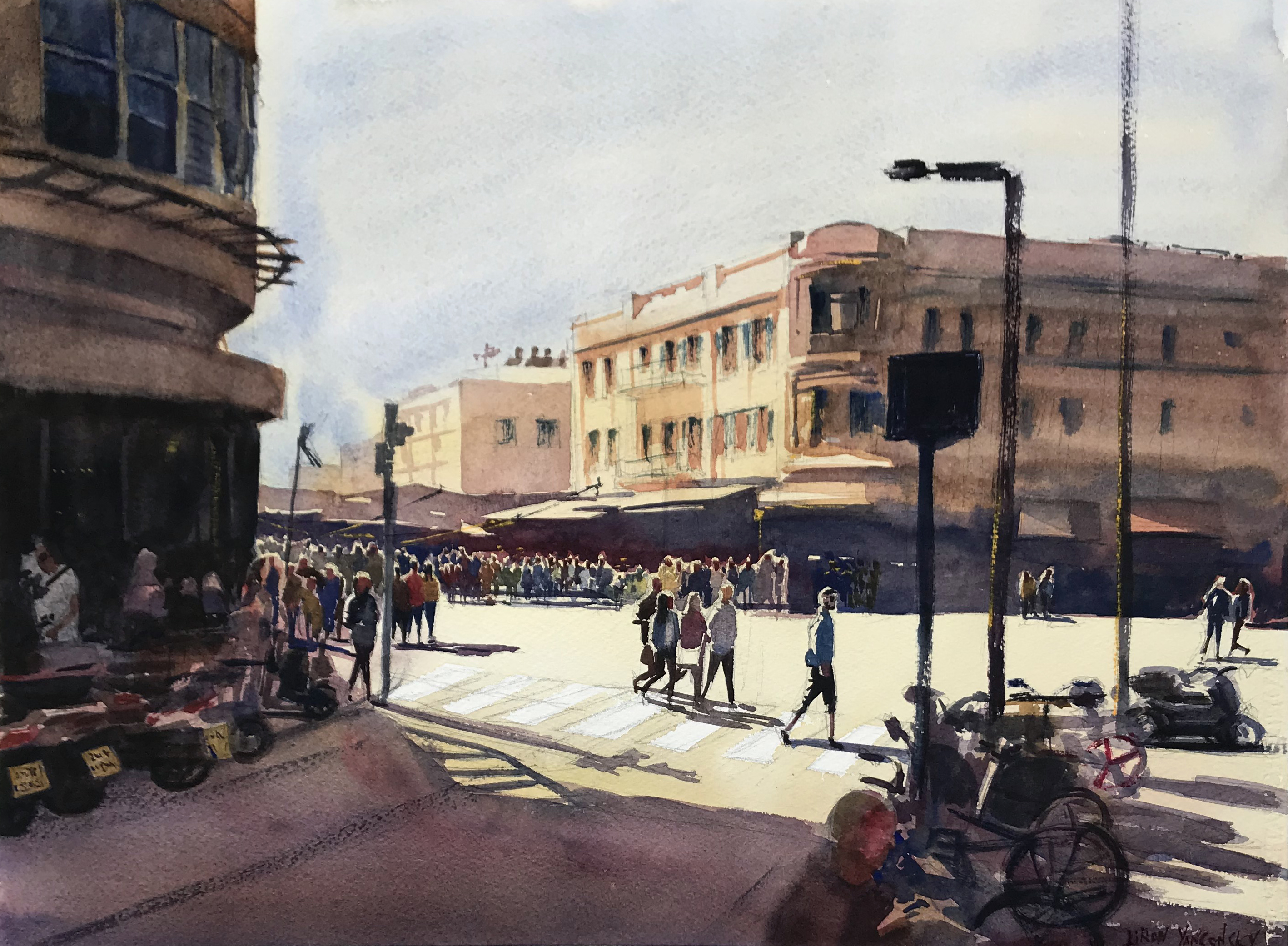
This painting “forced” me to slow down, consider my steps and become more patient.
And it taught me a lot.
I completely outdid myself, and it’s not necessarily thanks to an improvement in my skills, but rather thanks to the process I went through.
So let’s talk about some of the things that will help you improve your results immediately.
Improve Your Art With PLANNING
The first thing I would say is responsible to the improved result is me properly planning the painting.
I did several preparatory sketches in pencil. Some of the entire scene and composition, and others focusing on specific areas and details.
Here are some of those…
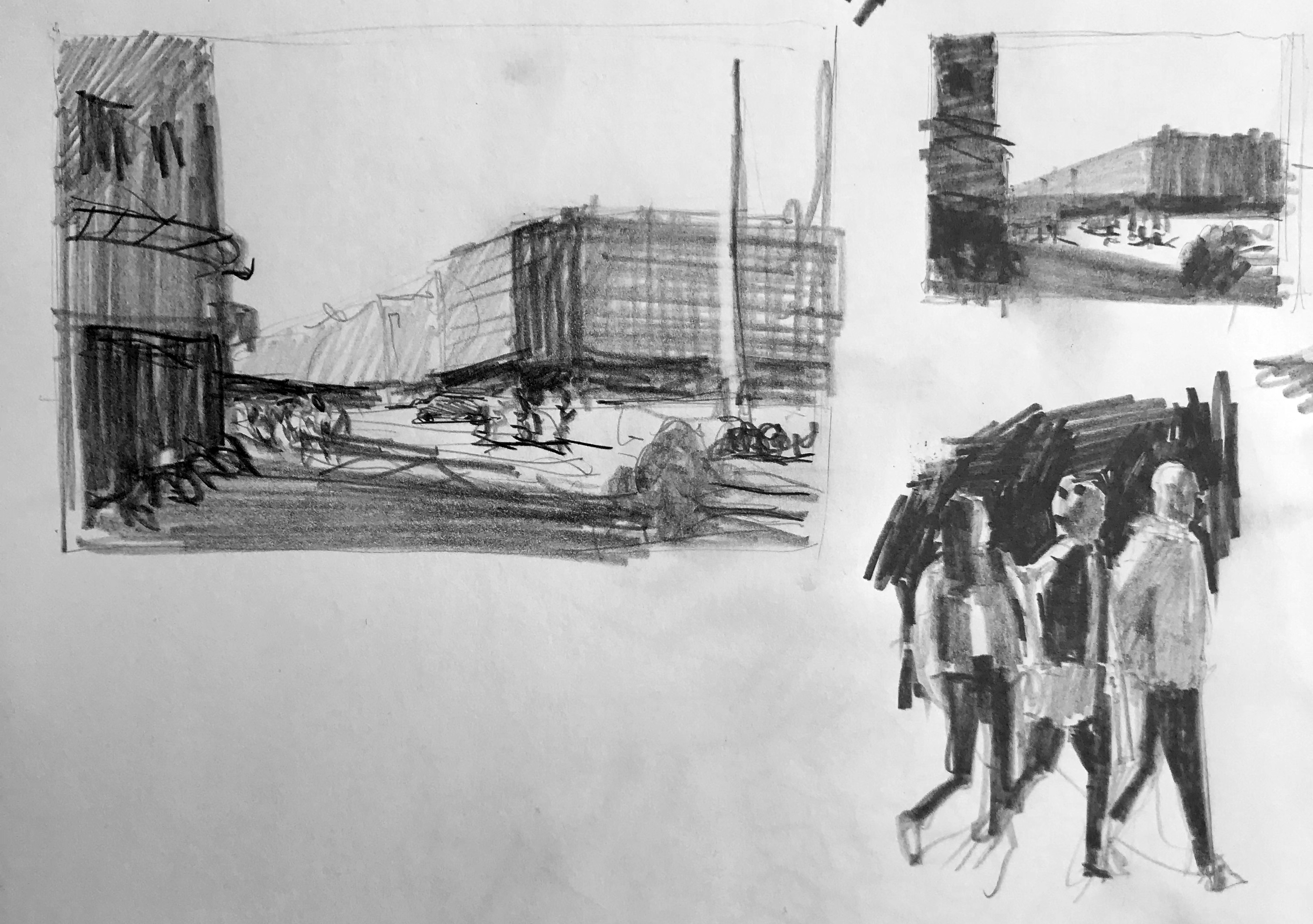

The main goal with these sketches is to familiarize myself with the scene, both on a macro level (overall composition), and on a micro level (details).
Focus & Slowing Down
That’s another thing I learned.
You want to deliberately slow down and work patiently. This also involved taking breaks whenever I feel like I’m getting impatient.
As soon as I felt like I was “trying to get to the end result”, rather than enjoy the process and be fully immersed in it – I took a break.
This proved to be very useful, and I kept my energy, motivation and creativity levels high throughout the whole thing.
And by the way, here are some stages from the start of the process until the end of it.
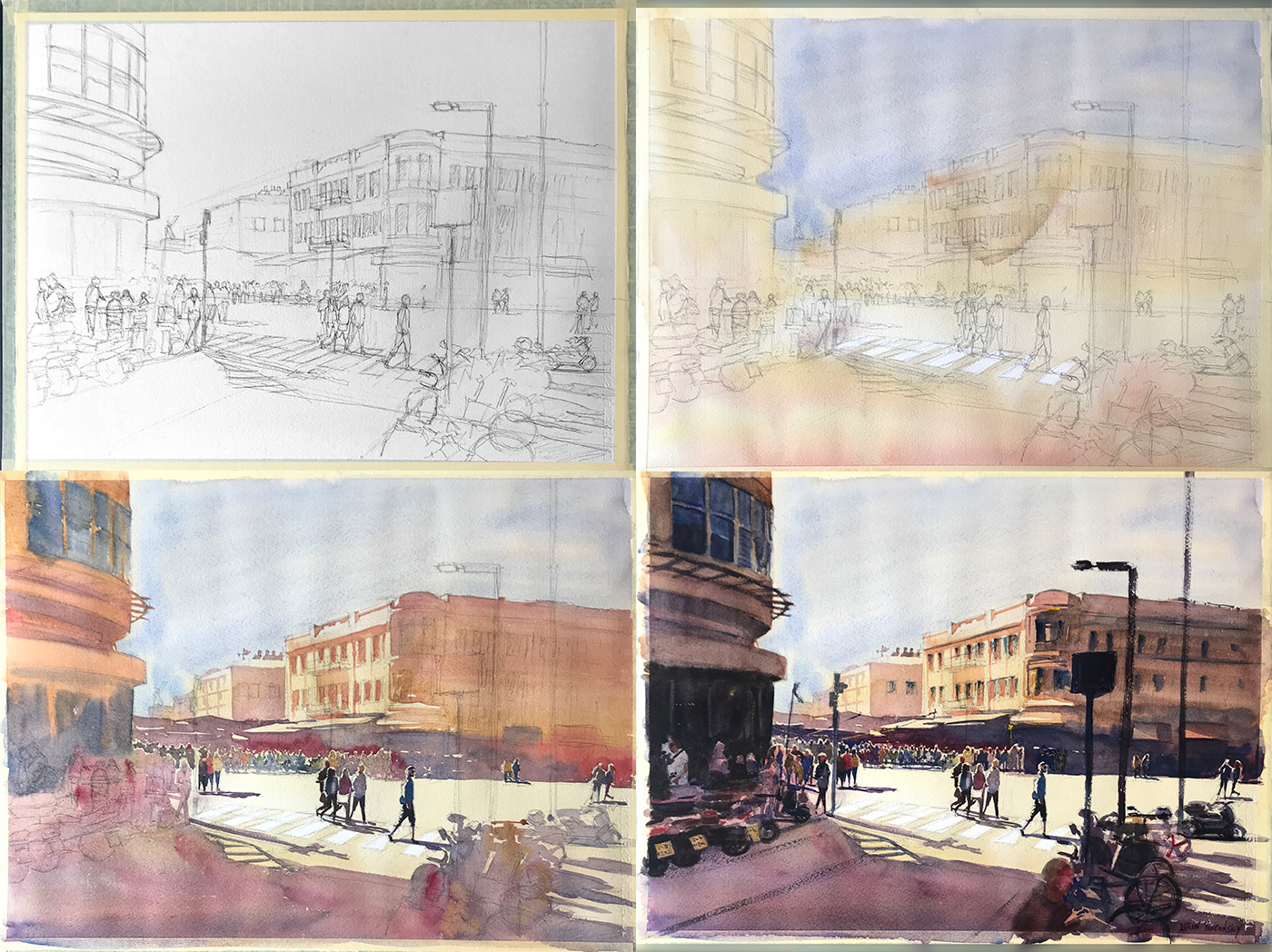
Deliberate Decisions
When painting it’s easy to get into auto-pilot mode.
Doing things on auto-pilot is useful. It’s essentially delegation of some actions to a lower-level element, to save resources.
Muscle memory can play a part in that.
But for some parts of the painting process, you want to be more present and deliberate.
So ask yourself – did I do this brush stroke out of habit and without thought, hoping for the best?
Or am I present to the moment, and doing things in a calculated manner?
If you are always hoping for the best, you may not achieve the result you want.
Last Tip – Scaling
When attempting to create an artwork that’s much LARGER than you are used to, I recommend scaling slowly and gradually.
Larger artworks, especially representational / realistic ones, will require more details as they scale up.
Sometimes it’s hard making the jump from a tiny thumbnail painting to a full sized one (the other way around is also true!).
So do it gradually.
Create a small thumbnail. Then double the size and make a slightly larger painting. Then double it again and do an A4 size. The again, until you are at the scale you are interested in.
This may seem a little redundant, but if you are planning a piece that will take a long time to finish, and you have that time, and you want it to be perfect (let’s say it’s a complex commission work) – this is a very useful process to follow.
And with that – we are ready to look at today’s artist!
Artist Corner
Today I talked about Yuko Nagayama, a Japanese artist.
Here work is so visually pleasing. She uses different subjects to symbolize different ideas and concepts.
She has a lot of florals, and what I especially love about them is that she is using so many colors as well, which reminds me of the way I tend to do portraits.
You can check out a lot of here work here, or by searching google images (;
And Here’s where you can find me
Check out my YouTube Channel – Liron Yanconsky
Or ask me questions on Instagram – @LironYanIL or Snapchat – @LironYan3
I hope you enjoyed this one. Take care, and we’ll talk again really soon,
– Liron

